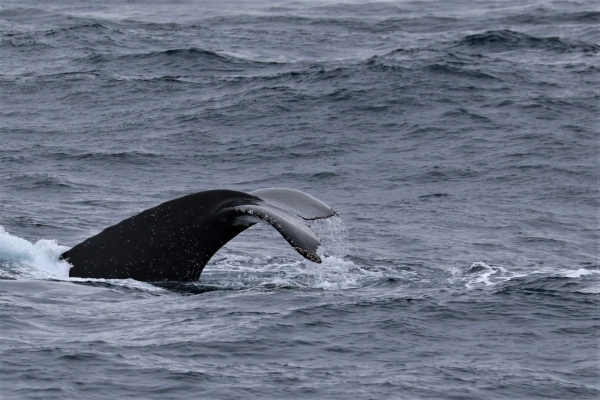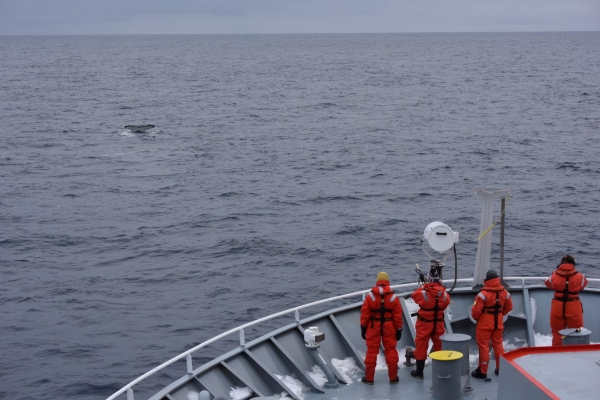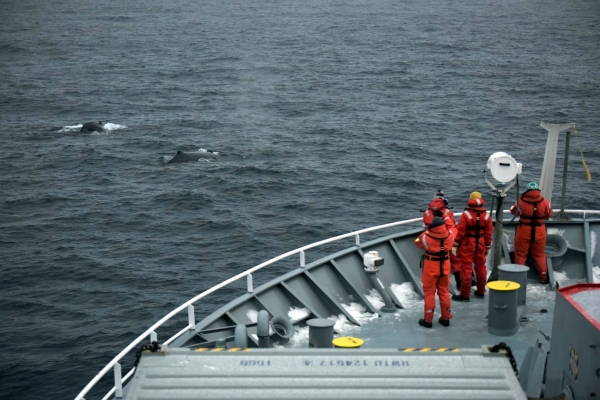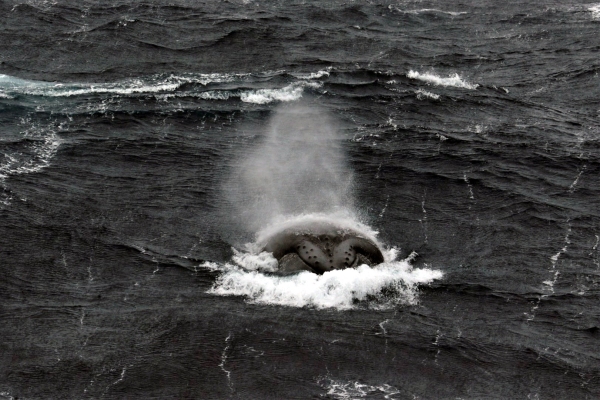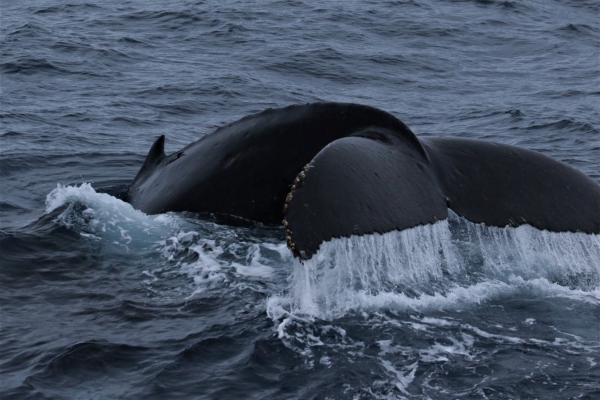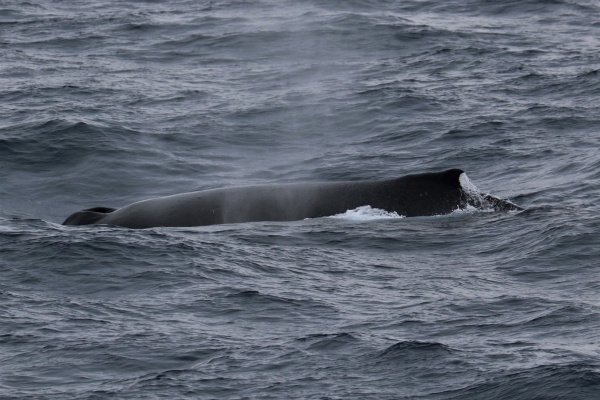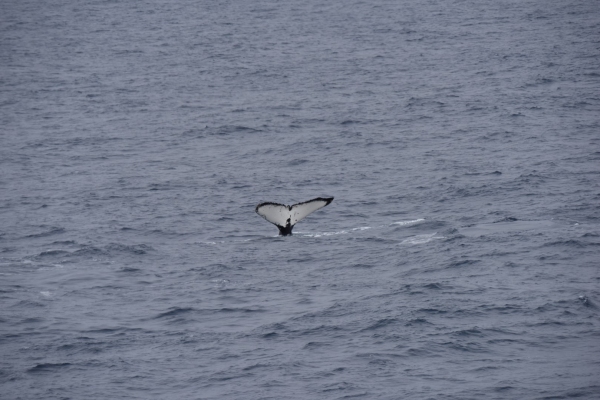1 March 2018
The University of Auckland Cetacean Ecology Team (aka the Whale Team) have been waiting patiently for the last few weeks for an opportunity to get close to some whales.
As we have moved further north up the Iselin Bank the sightings of humpback whales have increased. Humpback whales are baleen whales that mainly feed on krill and require feeding grounds with high densities of prey to support their energetic needs. So, reassuringly, after spotting large swarms of krill on the echosounder, yesterday we saw whales close to the Tangaroa.
The whale team took this opportunity to head to the bow of the ship and get biopsy dart samples of skin and blubber from two of the whales. The whales keep their distance from the ship and are constantly moving so it takes a skilled marksperson to get an accurate shot at the flank of the whale. Leena Riekkola, a PhD student at the University of Auckland, is tasked with using the crossbow to fire the dart, which is attached to a line so they can pull the sample back safely. The skin and blubber samples are used for gene sequencing and hormone analysis so the research team, part of the Southern Ocean Research Partnership led by Rochelle Constantine can identify the whale that the sample comes from, examine relatedness of the whales to one another, and determine their age and whether the whale is pregnant.
It is important to get a clear photograph of the fluke of the whale because the patterning and scars on the underside of the tail can be used to tell the whales apart from one another morphologically. Pippa Low is a skilled wildlife photographer and has her timing well-tuned to capture the perfect identification photo.

